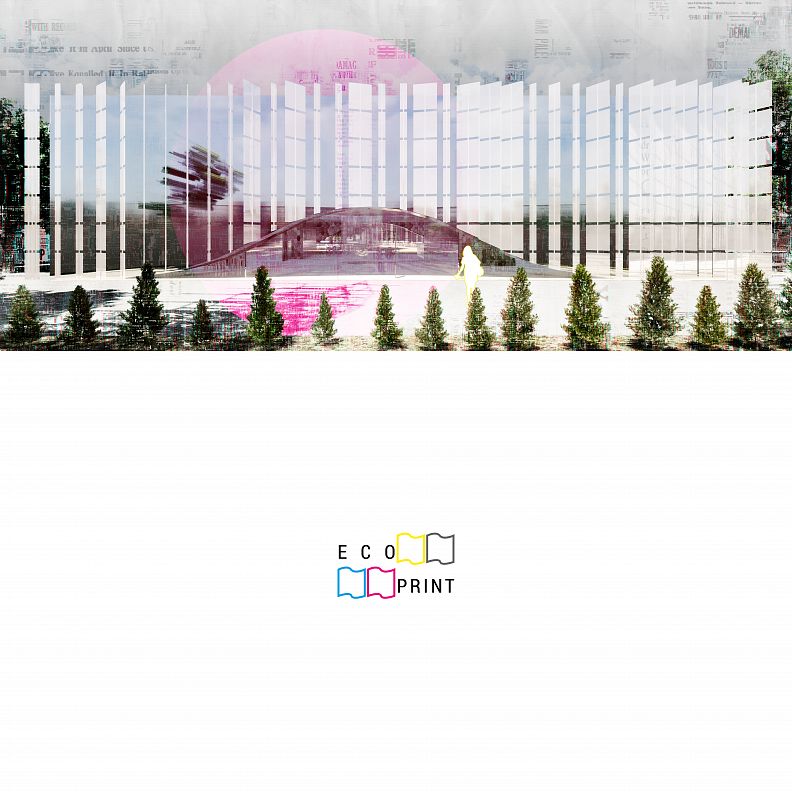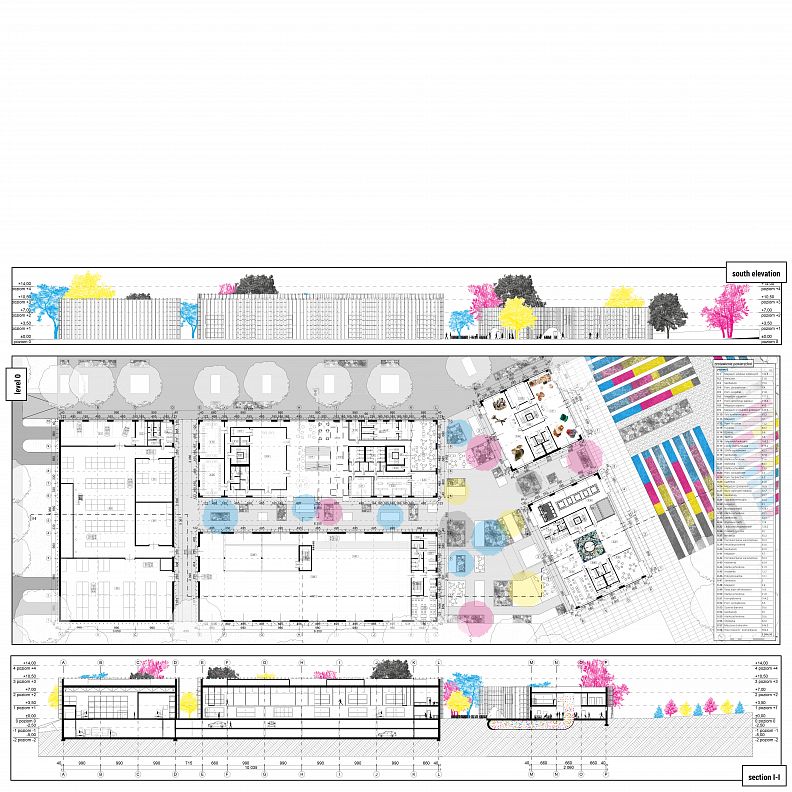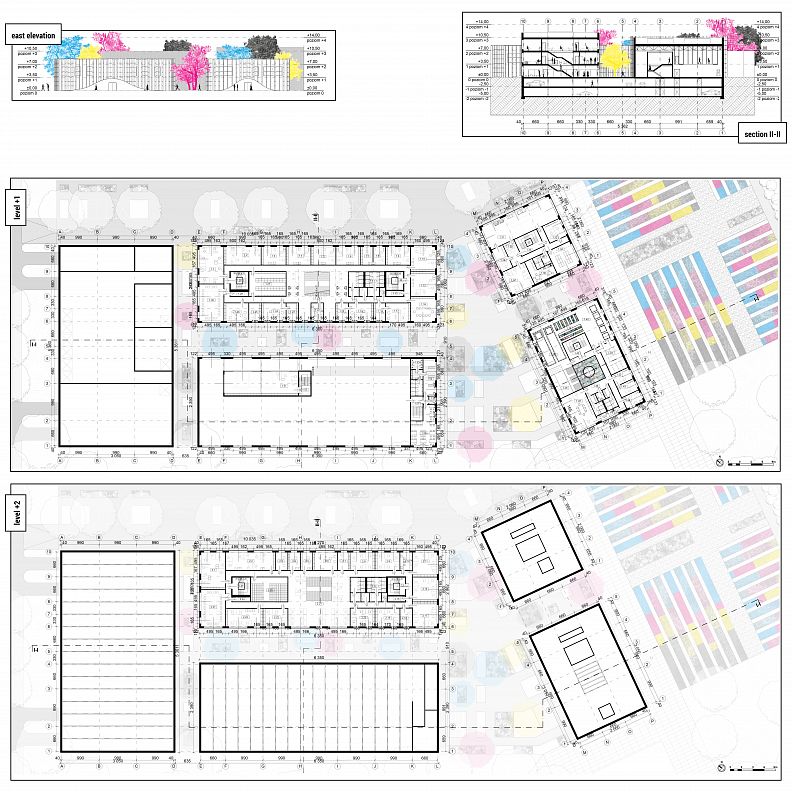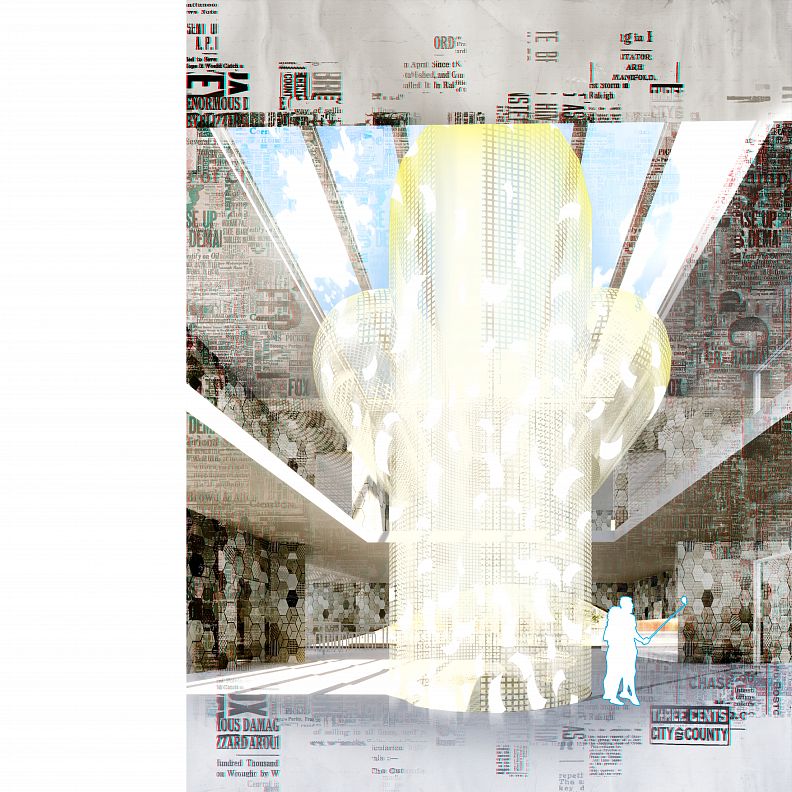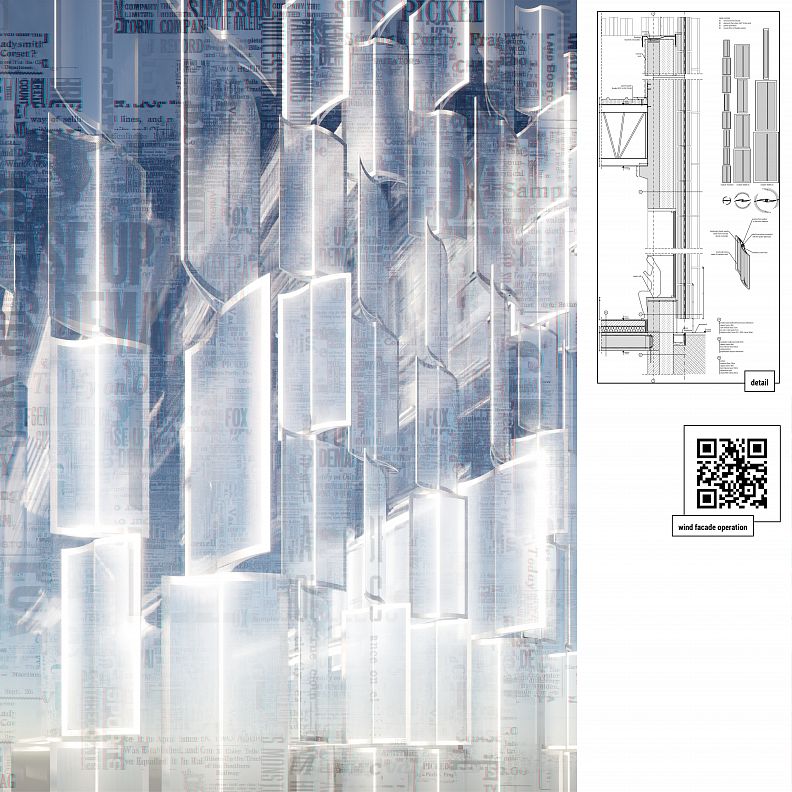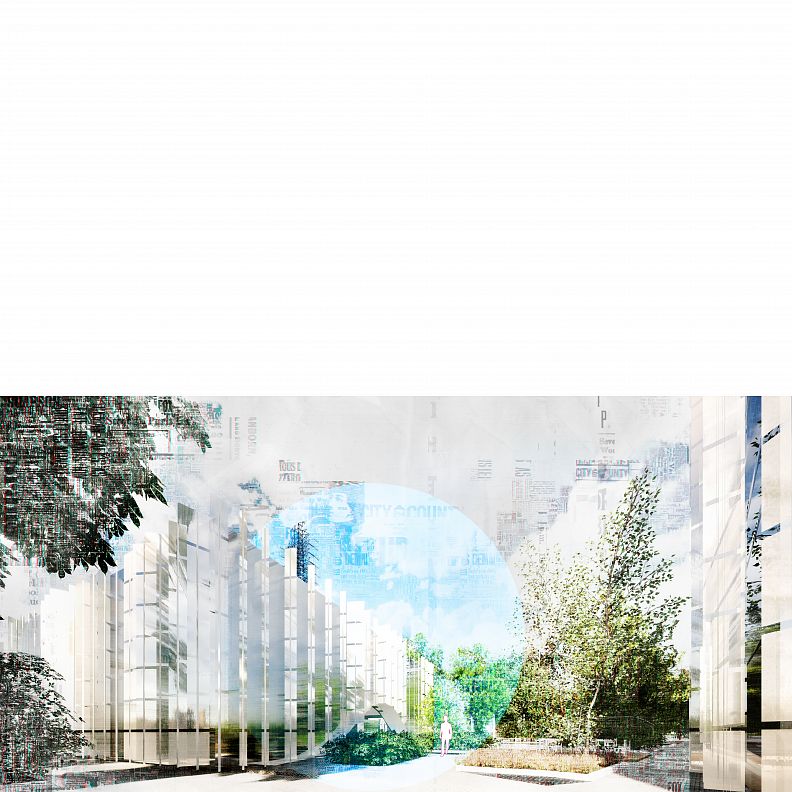eco_print

Project idea
The 3 main sustainable features that make this building unique:
1. paper recycling - minimising the production of waste while at the same time reusing it - introduction of an installation enabling direct use, recycling and reuse of paper cuttings
2. wind façade - intelligent use of wind energy for additional source of electricity
3. contact in greenery - separating individual functional blocks and dividing functions into more than one building makes it possible to create green spaces between them facilitating contact between employees
The dynamic development of new technologies has resulted in the creation of more and more science and technology parks. Their location is not only on the outskirts of the city, but also parts closer to the center. These zones become closed and dead spaces, accessible only to a small group of people. The project presents a universal solution, adaptable to various locations, assuming the creation of a science and technology park complemented by additional functions and open to various groups of users - production and office workers, as well as scientific and artistic ones, city residents, including children, young people, the elderly. It also changes the work environment to one filled with greenery and meeting places.
Project description
The functional program has been supplemented with functions encouraging plant cultivation, such as a plant nursery or arboretum, and learning the secrets of knowledge in the experience and sensory park. Within the science and technology park, a regional print shop was designed - a function still needed despite the availability of electronic resources. The whole functional area has been divided into blocks to enable the introduction of greenery not only in the form of potted plants inside the building, but also greenery growing naturally. Due to the high consumption of paper in daily printing, a tree nursery was located in the immediate vicinity of the building in order to minimally compensate for the deforestation for the production of raw material. The printing process of the press generates a large amount of paper offcuts, so the project envisaged the location of a "recycling pipe" connecting the production hall directly to the converting building. The confetti effect of recycled paper is meant to attract the attention of passers-by, while the direct insight into the process of processing used paper and producing recycled furniture is meant to encourage participation in artistic workshops using the modified raw material to create both small decorative objects and sculptures. The façade of the buildings comprising the print shop complex is provided as thin sheets of stainless steel, which is a durable material, to replicate the view of greenery from the building windows. The windows, which are flush with the façade, not only complete the "mirror cube" effect, but also become additional natural meeting places for employees, directly in their offices, thanks to a deep window sill placed at seat height. The wind façade, thanks to its shape, not only provides the visual effect of a sheet of paper rippling in the wind, but is also an additional source of energy for the building. The entire complex of buildings of the printing house and the scientific-technological park are designed primarily for the different groups of the city's inhabitants and for the comfort of academic, office and physical workers, providing them with a wide range of public services such as a meditation centre, small catering establishments, sports areas, coworking space or a kindergarten. Vast areas of this type of investments constitute a considerable part of the urban tissue, therefore, looking globally, they should fulfil not only innovative or productive functions, but also those characteristic for the definition of urbanity.
Technical information
Energy and Climate:
The minimalization of energy use has been foreseen according to the life cycle of the building. During the construction phase, it is envisaged to use prefabricated materials from a local factory. Consumption during the use of the building has been reduced by introducing energy efficient installations and systems. The simple design also makes it easy to change the function of the building. The demolition phase includes the reuse of structural elements. The installation of a wind façade that produces electricity is expected to reduce building operating costs. Users and their work efficiency will be influenced by the contact with greenery, the possibility of collaborative work and the use of public services located within a short distance from the workplace. The maximum efficiency of the building is influenced by its simple design, which is clear to users, making their work faster and more comfortable.
Technical solutions to reduce energy consumption:
Energy-reducing solutions are mainly trees in the spaces between the functional parts of the complex, providing adequate shade. In addition, the energy produced by the wind facade will be used for LED lighting inside the building. Natural lighting will be actively controlled.
Indoor environmental quality:
Indoor air quality will be improved by finishing the necessary surfaces with water-based paints and introducing hybrid ventilation. Large window openings provide above average access to daylight. The wind façade does not limit the access of sunlight to the interior of the building due to the high translucency of the materials from which it is made. Appropriate acoustics will be introduced thanks to the arrangement of the office - acoustic partitions, sound-absorbing furniture, ceilings and carpets with improved sound-absorbing parameters and introduction of a large number of plants to the interior.
Water savings:
Due to the necessary installation of a large amount of public restroom equipment, in order to reduce water loss, it has been proposed to regulate the water supply through valves that stop the water supply when the building is not in use. Rainwater will be used to water the plants in the common spaces, thanks to a reuse system. Drinking water supply will be provided by "water meters" to which water will be supplied from a local intake.
Technical solutions to reduce the use of water:
Equipment in the building that reduces water use will include water-saving cisterns and a rainwater harvesting tank.
Materials, reducing waste production, increasing recovery:
Taking into account the reduction of waste on site, the construction of the building was planned using prefabricated elements. Due to the simple wall and column construction, the building can be adapted to other functions in the future, and in the event of demolition, it is possible to reuse the prefabricated elements. The function of the building made it possible to limit the use of finishes to the necessary minimum. However, in places where it is necessary, a recycled tile finish has been designed. The façade material chosen is stainless steel, which is a high quality material with good durability.
Location and access to amenities:
The area selected for development is currently unused and is characterised by high voltage poles, affecting limited development opportunities. The location of the project was adjusted to the character of the science and technology park complex - it is located on the outskirts of the city, in the direct vicinity of the economic and industrial zone and the main road connections, both car and public transport. Bicycle paths have been planned to serve the whole area. The regional print shop building complex will provide parking spaces for bicycles and for cars with the possibility of installing electric vehicle charging points. The complex is also adjacent to an area of natural greenery, a tree nursery and a main pedestrian route, equipped with buildings for a meditation center and small catering units, leading to a kindergarten, a gym and sports areas, among others.
